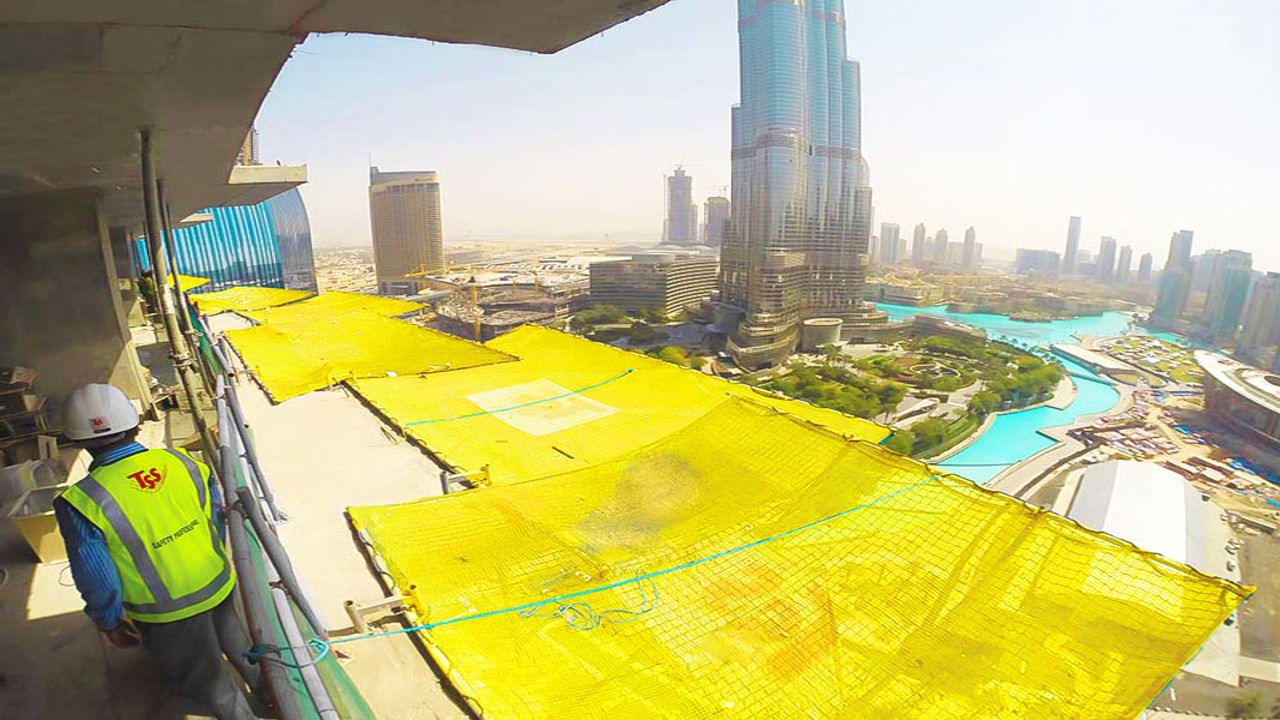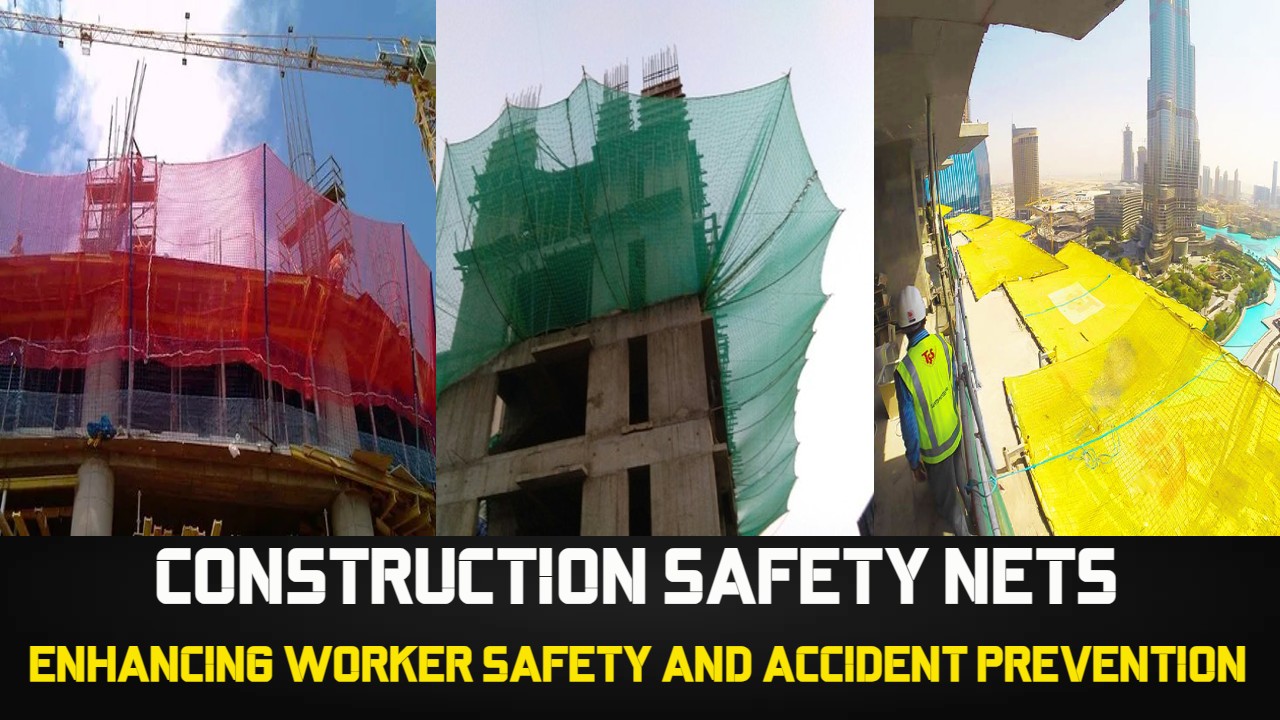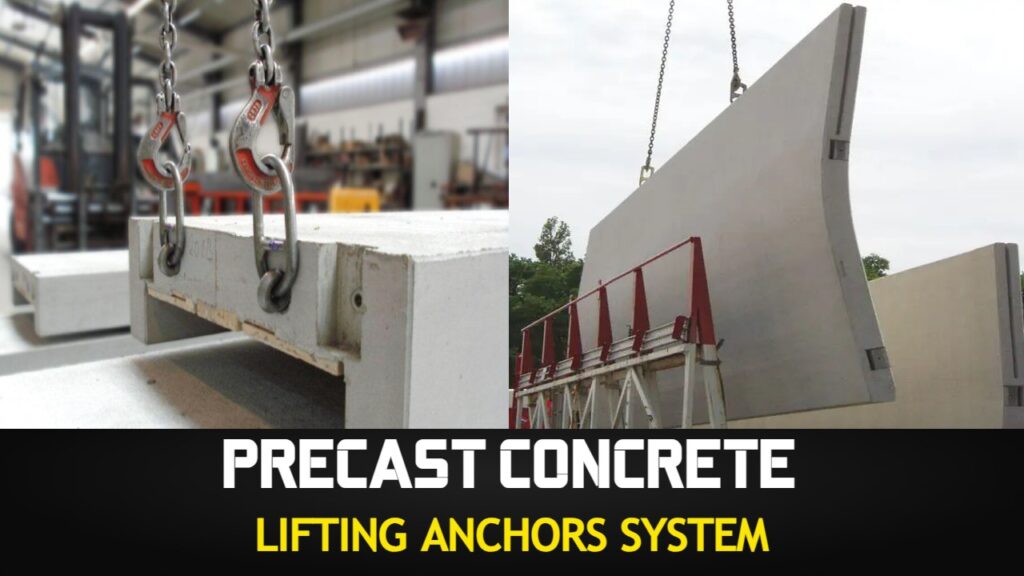Safety is of utmost significance in the construction business to ensure the welfare and protection of employees and the general public. The construction safety net is an essential safety precaution utilized on building sites. The purpose of a construction safety net is to safeguard both employees and pedestrians by preventing fall-related accidents and injuries. Construction sites may guarantee a safer working environment by adhering to safety rules and guidelines. Utilizing safety nets also helps to boost efficiency and production while lowering the need for workers’ compensation insurance and its related expenses.
Contents
- 1 Importance of Safety Measures in the Construction Industry
- 2 Definition of Construction Safety Net
- 3 Advantages of Using Construction Safety Nets on Sites
- 4 Types of Construction Safety Nets
- 5 Considerations for Implementing Construction Safety Nets
- 6 Cost Considerations and Return for Construction Safety Net
- 7 Challenges and Limitations of Construction Safety Nets
- 8 Case Studies and Success Stories – Construction Safety Nets
- 9 Conclusion – Construction Safety Net
- 10 Frequently Asked Questions (FAQs)
Importance of Safety Measures in the Construction Industry
Because construction labor is inherently dangerous, safety precautions are essential in the sector. Working at heights, using large machinery, and managing a variety of tools and materials are common at construction sites. Construction workers and onlookers who are not properly protected run the danger of mishaps, injuries, and even fatalities.
By putting strong safety measures in place, construction businesses can protect the health and safety of their employees as well as stay within the law and avoid exorbitant legal fees. Furthermore, placing a priority on safety may boost output by encouraging a motivating and secure work environment.
We shall examine the benefits of using a construction safety net as an essential safety measure in building sites in this post. We will also go over crucial points to remember while employing these nets in order to guarantee their efficacy and optimize their advantages. Construction professionals may improve overall safety in the sector by using safety nets by having a thorough awareness of the advantages and important factors involved.
Definition of Construction Safety Net
A customized barrier called a “construction safety net” is created to stop falls and lessen the impact of things falling on building sites. These nets are often fashioned in a mesh-like design from strong synthetic fibers or metal wires to efficiently capture or cushion falling people or items. To form a safety barrier, construction safety nets are judiciously erected at high work places, such as scaffolding, rooftops, or open floors.

Advantages of Using Construction Safety Nets on Sites
Prevention of Fall-Related Accidents and Injuries
The capacity of construction safety nets to reduce fall-related accidents and injuries is one of its main advantages. They offer a dependable way to catch employees who could slip, trip, or lose their balance by putting safety nets in places where falls are likely to happen, including working platforms or elevated buildings. Safety nets successfully stop falls and dissipate the impact energy, reducing the chance of serious injuries or fatalities.
Protection for Workers and Pedestrians
building safety nets protect not only the personnel who are directly involved in the activity but also pedestrians and those who are nearby the building site. These nets can successfully stop falling things from harming people from reaching the ground, such as tools, garbage, or building materials. Safety nets help to ensure a secure environment for everyone on and around the building site by establishing a containment system.
Compliance with Safety Regulations and Standards
Construction enterprises can adhere to safety guidelines and standards established by regional authorities and professional organizations by using construction safety nets. Safety nets frequently meet or surpass the criteria set forth by many authorities for fall prevention in construction. By putting safety netting in place, construction businesses show that they are committed to providing a secure workplace, lowering their chance of facing fines and other legal repercussions.
Increased Productivity and Efficiency
Construction sites may become more productive and efficient by putting safety nets in place. Workers can concentrate on their activities without continual stress about potential falls or accidents when they feel assured in their safety and well-being. Safety nets provide people a sense of security, which elevates their mood and attention. As a result, production is increased, and building projects may move forward easily and effectively.
Reduction in Worker’s Compensation Claims and Costs
Construction businesses may incur significant workers’ compensation expenditures as a result of accidents and injuries on the job. Utilizing safety nets in the construction industry lowers the possibility of serious accidents or fatalities, which lowers the number of workers’ compensation claims. Safety nets are ultimately a financially advantageous investment because of the decrease in claims, which results in cost savings for the business.
Construction safety nets have a variety of advantages. They safeguard employees and pedestrians, assure adherence to safety requirements, boost productivity, and lower the need for and expense of workers’ compensation claims. They also avoid fall-related incidents and injuries. By using safety nets’ benefits, building sites may improve overall safety and well-being in the sector by fostering a safer working environment and reducing possible dangers.

Also Read: Concrete Mixer Machine: Versatile Tool for Construction Projects
Types of Construction Safety Nets
A) Personnel Safety Nets
Personnel safety nets are made expressly to guard against falls and reduce the possibility of serious injuries. These nets are often comprised of resilient synthetic fibers with great tensile strength and resistance to impact pressures, such nylon or polypropylene. The nets’ mesh design ensures that they are strong enough while also allowing for some flexibility to absorb the force of a fall.
Installation and Usage Guidelines
Personnel safety nets must be installed and used according to the correct procedures to be effective. In order to prevent drooping, the nets should be firmly fastened to supporting structures like scaffolding or building frames. To enable the net’s intended use, there should be enough space between it and any potential obstacles, including lower levels or machinery. To find any damage or wear and tear that might jeopardize the integrity of the net, it is essential to do routine inspections and maintenance.
Common Applications
In a variety of construction settings, personnel safety nets are useful, including but not limited to:
- Elevated work platforms and scaffolding: Under working platforms or scaffolding, safety nets are put in place to catch workers in case they fall.
- Roofs and open floors: Personnel safety nets offer an extra line of defense against falls when working on rooftops or open floors without safety rails.
- Bridge construction: During bridge building, safety nets are frequently utilized to keep employees from falling into the sea or onto lower floors.
- High-rise buildings: Safety nets can be deployed at various heights during the building of tall constructions to shield employees from falls at different points in the project.
B) Debris Safety Nets
Safety nets for debris have a different use than safety nets for people. They are mostly employed to trap and stop falling waste, such as equipment, building supplies, or loose objects, from reaching the ground or creating a danger to employees and others walking nearby. As a result of these nets’ ability to endure the weight and force of falling items, trash is efficiently caught and confined.
Installation and Usage Guidelines
Several things should be taken into account while choosing and installing debris safety nets. For the nets to survive the weight and power of falling debris, they should be constructed from strong materials with a high breaking strength. The mesh size should be suitable to block the passage of tiny items and provide enough airflow to lessen wind resistance. Depending on the unique needs of the building site and the required debris containment area, debris safety nets are normally erected either vertically or horizontally.
Key Benefits in Debris Containment and Prevention
On construction sites, debris safety nets provide the following major advantages:
- Worker and pedestrian safety: These nets shield employees and passersby from possible harm brought on by falling items by successfully confining the debris.
- Property protection: By preventing falling debris from reaching neighboring buildings, structures, and machinery, debris safety nets reduce the risk of harm to such items.
- Enhanced efficiency: Debris safety nets at construction sites may keep the work environment neat and tidy, which cuts down on the time and labor needed for cleanup and promotes a more efficient workflow.
- Environmental protection: Debris contained by safety nets aids in preventing pollution and environmental harm brought on by dangerous chemicals or loose building materials.
Workers are protected from falls by personnel safety nets, while debris safety nets are used to catch falling materials. Both kinds of safety nets provide a substantial contribution to the security of construction sites by lowering the possibility of accidents, safeguarding personnel and bystanders, and improving overall productivity. These safety nets must be chosen, installed, and maintained correctly in order to be useful in various building circumstances.
Also Read: Concrete Pump: Types, Applications, Pros and Cons, Maintenance, and Cost Analysis
Considerations for Implementing Construction Safety Nets
Local and National Safety Guidelines
It is crucial to make sure that local and federal safety regulations are followed while putting construction safety nets into place. The use of safety nets in construction may be subject to a variety of rules and regulations that vary by jurisdiction. Make sure the safety nets adhere to these regulations by becoming familiar with them.
Certification and Testing Requirements
Take into account the certification and testing specifications for safety nets in construction. To assure their efficacy and dependability, look for nets that have received certification from reputable industry groups or that have passed thorough testing. The effectiveness and quality of the safety nets are further supported by compliance with standards like those set by the European Norm (EN) or the American National Standards Institute (ANSI).
Training and Expertise of Personnel
Construction safety net installation needs skilled and knowledgeable staff. Make that the people in charge of installing the nets have received sufficient instruction in the proper installation methods. To guarantee best performance, they should be aware of the precise specifications for tensioning, connection points, and fastening the nets.
Regular Inspections and Repairs
Construction safety nets must be maintained and subjected to routine inspections in order to continue working effectively. Set up a timetable for inspections to spot any indications of deterioration, corrosion, or wear in the nets. Address any problems right once and make any repairs or replacements that are required. The safety nets are kept in good shape and are able to fulfill their function successfully thanks to routine maintenance.
Scaffolding and Guardrails
Construction safety nets should be used in conjunction with guardrails and scaffolding, among other safety precautions. Safety nets should be viewed as a component of a whole fall prevention system rather than as a stand-alone fix. Use safety nets as an additional layer of protection in case of accidents or equipment failure, and provide guardrails and railings to prevent falls.
Personal Protective Equipment (PPE)
In addition to safety netting, construction workers should always wear personal protective equipment (PPE). PPE should be used as a preventative measure, such as safety harness lanyards, helmets, and harnesses. Safety nets add an additional layer of protection to PPE, but they shouldn’t take the place of the necessary personal protective equipment.

Also Read: Cement Grouting Machine: Types, Applications, Advantages, Cost Analysis
Cost Considerations and Return for Construction Safety Net
Think about how much it would cost to create building safety nets. Safety should always come first, but it’s also important to consider how much it will cost to buy, install, and maintain the nets. Consider the possible return on investment in terms of fewer workers’ compensation claims, increased output, and greater adherence to safety laws. Consideration should be given to long-term financial savings as well as the overall advantages of increased safety.
Construction businesses may make sure that their safety net systems are legal, properly constructed and maintained, integrate with other safety measures, and provide a good return on investment by carefully examining these implementation factors. This method enhances the usefulness and advantages of safety nets for construction workers, making the workplace a safer place for everyone.
Challenges and Limitations of Construction Safety Nets
Height Restrictions and Access Points
When there are height constraints or few access points, construction safety nets may not be as effective. For instance, installing safety nets properly may be difficult in situations with little overhead clearance or restricted spaces. Alternative fall protection strategies may need to be taken into account in such circumstances.
Complex Architectural Designs
Installation of safety nets may be difficult in construction projects with intricate architectural features, such as curved or uneven buildings. To match the precise shape and features of the structure, the nets may need to be specially created or modified, which can be time-consuming and expensive.
Falling Debris and Entanglement Risks
Although construction safety nets are designed to catch falling objects, there is still a chance that some debris might get caught in the net or pass through it. Items having pointed edges or asymmetrical forms might harm the net or present entanglement risks. In order to see any damage or possible problems quickly and solve them, routine inspections and maintenance are essential.
Proper Disposal and Environmental Impact
The safety nets may need to be appropriately disposed of after the conclusion of a building job. Some safety nets might be difficult to recycle, and incorrect disposal can have a detrimental effect on the environment. When feasible, construction businesses should look into ecologically appropriate disposal techniques or investigate opportunities for reusing or recycling nets.
Importance of Education and Training Programs
Workers must be given thorough education and training programs in order for construction safety nets to have the greatest possible positive effects and efficacy. Training ought to address the appropriate application of safety nets as well as their restrictions and potential threats. Workers must be informed of possible risks and emergency procedures, as well as how to operate properly while using the nets.
Effective Communication and Implementation Strategies
In order to guarantee that construction workers understand and adhere to safety procedures when working with safety nets, effective communication and implementation techniques are essential. To reinforce safety procedures and answer any issues or questions that may emerge, it is crucial to have clear signs, frequent safety meetings, and constant communication between employees, supervisors, and safety officials.
Construction businesses may create methods to address these issues and constraints, improving the overall efficacy of safety nets in the industry. To keep a safe working environment for everyone participating in construction projects, it is essential to regularly review and overcome these limits.
Also Read: Tor Steel Per Kg Price: TMT Steel Per Kg Price Today
Case Studies and Success Stories – Construction Safety Nets
Successful Implementation of Construction Safety Nets
The London Olympic Park project, which was undertaken as the Olympic Stadium for the 2012 Olympic Games was being built, is one example of a successful deployment of construction safety nets. Numerous safety precautions were taken at the building site, including the placement of safety netting at various stadium levels. These nets efficiently protected the employees from falls and offered a dependable fall protection system. The building project was successfully finished without any significant fall-related incidents or injuries because to the effective application of safety nets, which also helped to create a safe working atmosphere.
Showcase Real-Life Examples of Accident Prevention and Worker Protection
Safety nets were crucial in averting a possibly catastrophic accident on a Sydney, Australia, construction site. An employee lost his footing and fell five meters. The built safety net, however, successfully grabbed the worker, reducing the impact and averting serious injury. The experience demonstrated the value of safety nets in offering trustworthy fall protection and preserving lives under dire circumstances.
Discuss Measurable Improvements and Outcomes Achieved
The safety results and quantifiable advantages for construction organizations that have deployed construction safety nets have improved significantly. For instance, a construction firm in the United States installed safety netting at several job sites. The business noticed a 40% decrease in fall-related incidents and injuries over a two-year period. The corporation saw significant cost savings as a consequence of the decline in workers’ compensation claims and related expenses.
The use of safety nets has enhanced production and efficiency in addition to accident avoidance. On construction sites, enhanced productivity and improved workflow are the result of giving workers a sense of security and lowering their fear of falling.
Additionally, building firms that place a high priority on safety and make use of safety nets have seen an increase in adherence to safety rules and guidelines. This adherence has helped them keep a good reputation in the field, draw in qualified personnel, and land contracts with customers that place a high priority on safety.
These success stories and case studies show the practical advantages of putting construction safety nets in place. They emphasize how these nets have successfully avoided accidents, safeguarded employees, decreased expenses, increased production, and guaranteed adherence to safety regulations. Construction professionals might be inspired to emphasize safety and take construction safety nets into consideration by studying these instances and learning from them.
Source: SAFETY MGMT STUDY
Conclusion – Construction Safety Net
Construction safety nets are crucial preventative measures in the field. Numerous advantages include minimizing fall-related accidents and injuries, safeguarding personnel and bystanders, assuring adherence to safety standards, boosting output, and lowering workers’ compensation claims and expenses. Safety nets provide an extra layer of security and dependable fall prevention on construction sites, fostering a more secure working environment for everybody.
Construction safety nets must be installed and maintained properly in order to be used to their maximum potential. Priority should be given to safety rules, certifications, and testing requirements while choosing and installing safety nets. The proper installation and tensioning of the nets need knowledge and experience. The integrity of the nets and their continued efficacy are maintained by routine inspections and repairs. To offer complete fall protection, integration with additional safety measures like guardrails and personal protective equipment should be taken into consideration.
The future of construction safety nets is bright as long as the sector continues to place a high priority on safety. It is conceivable that improvements in technology, design, and materials will provide safety nets that are even more powerful and adaptable. It is impossible to overestimate their contribution to raising industry standards and worker safety. Construction safety nets will still be an essential part of fall prevention systems, lowering accidents, safeguarding employees, and enhancing general site safety. The construction sector can continuously work toward greater safety standards and a safer future for everyone by embracing these safety measures and upholding a strong commitment to worker well-being.
Frequently Asked Questions (FAQs)
Can construction safety nets eliminate the risk of falls?
Safety nets considerably minimize the danger of falls, but for the best protection, they should be used in conjunction with other safety measures like guardrails and personal protective equipment (PPE).
Do safety nets need regular inspections?
Yes, Safety nets need to be inspected often to spot any wear, damage, or compromised places. Before each usage as well as on a regular basis throughout construction, inspections must to be made.
How long do construction safety nets last?
The longevity of safety nets is affected by a number of variables, including usage, exposure to weather, and adequate maintenance. Inspections on a regular basis will help to identify when replacement is required.
Can safety nets be used in all types of construction projects?
A variety of construction projects, including those involving high-rise structures, bridges, and residential development, can benefit from the usage of safety nets. Alternative safety measures, however, can be necessary due to particular site characteristics and architectural complexity.
Are safety nets environmentally friendly?
Usually, strong, recyclable materials are used to make safety nets. To reduce the negative effects on the environment, proper disposal procedures should be used.
What training is required to install safety nets?
Professionals with training and experience in installing safety nets should install them to ensure proper connection and maximum efficiency.
Can safety nets be customized for specific construction requirements?
Yes, To meet the particular requirements of building projects, safety nets might be modified. Professionals with the necessary training may evaluate the location and provide the best safety net requirements.
How often should safety net installations be inspected?
Installations of safety nets should be frequently inspected, including before each usage, to make sure they are in excellent shape, securely fastened, and devoid of any damage or wear.
Can safety nets be used for interior construction projects?
Yes, For interior building projects, safety nets can be used to stop falls and safeguard personnel. Critical factors to think about include proper installation and attachment locations.
Are safety nets only effective for fall prevention, or do they also protect against falling debris?
Safety nets have two functions. They safeguard workers and passersby by preventing falls and acting as a barrier against falling debris – Construction Safety Net






